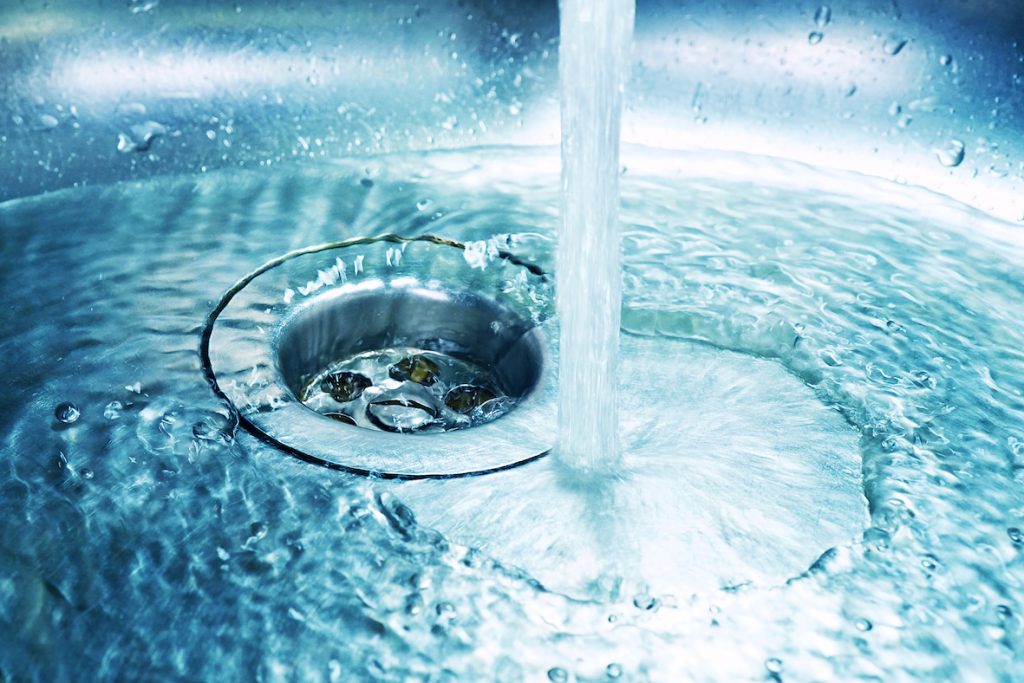How climate change, outdated plumbing and human error are making outbreaks more common
If you’ve been paying attention to public health news in recent years, you might have noticed something concerning: Legionella outbreaks are becoming increasingly frequent across the UK and globally. This isn’t just media scaremongering or improved detection methods, the data shows a genuine upward trend.
At HCS Water Treatment, part of Premier Technical Services Group Ltd (PTSG), we’ve observed this phenomenon firsthand through our work with clients across sectors. As specialists who’ve spent three decades battling this microscopic menace, we’ve developed insights into why Legionella appears to be gaining ground and more importantly, what you can do to ensure your building doesn’t become its next conquest.
The Uncomfortable Truth: Legionella Is Indeed Becoming More Common
Before we dive into the why, let’s confirm what the numbers tell us. Public Health England data reveals a steady increase in reported Legionnaires’ disease cases over the past decade, with some years showing spikes of 20-30% above previous averages. Similar trends have been documented across Europe and North America.
This isn’t just about better reporting or improved diagnostics (though these factors play a role). We’re seeing genuine increases in both:
- The frequency of Legionella outbreaks
- The geographic spread of cases
- The diversity of building types affected
So what’s driving this unwelcome bacterial renaissance? Several key factors have converged to create what one water safety expert called “the perfect storm for Legionella proliferation.”
Climate Change: Creating Bacterial Paradise
Our warming planet isn’t just affecting polar bears and glaciers, it’s creating ideal conditions for bacterial growth in our water systems:
Warmer Ambient Temperatures
As average temperatures rise, maintaining cold water systems below the critical 20°C threshold becomes increasingly challenging. Water entering buildings from main supplies is often warmer than in previous decades, especially during extended summer heatwaves.
One facilities manager at a large commercial property in London told us: “Ten years ago, our incoming water temperature never exceeded 17°C. Last summer, we recorded readings above 19°C for weeks at a time.”
More Extreme Weather Events
Intense rainfall and flooding can introduce organic material and sediment into water supplies, providing nutrients for microbial growth and reducing the effectiveness of residual disinfectants.
Extended Warm Seasons
Longer summers mean extended periods when water systems are at higher risk. The traditional “Legionella season” is expanding, with cases now commonly reported from May through October rather than just the height of summer.
Ageing Infrastructure: The Ticking Time Bomb
Much of the UK’s building stock and public water infrastructure is showing its age, creating perfect conditions for bacterial colonisation:
Legacy Plumbing Systems
Buildings constructed in the 1960s-1980s often feature complex plumbing configurations with redundant pipework, dead legs and oversized storage tanks, all prime real estate for bacterial growth.
During one risk assessment of a 1970s office complex, our team discovered more than 30 metres of unused pipework that had been abandoned during various renovations but never properly decommissioned, essentially serving as bacterial incubators connected to the main system.
Deteriorating Materials
Ageing pipes develop biofilm, scale, and corrosion much more readily, providing both protection and nutrients for Legionella bacteria. These surfaces make disinfection increasingly difficult and less effective.
Outdated Design Standards
Many older buildings were designed before Legionella was a recognised concern, featuring layouts that inadvertently promote bacterial growth through excessive storage, poor circulation, or inappropriate materials.
Changing Building Usage Patterns: New Risks in Familiar Places
Our relationship with buildings has changed dramatically, creating new vulnerabilities:
Hybrid Working Models
Post-pandemic work patterns have resulted in partially occupied buildings with significantly reduced water usage. Those unused executive showers and half-empty office blocks create perfect conditions for water stagnation.
One property management company we work with noted: “Before 2020, our water usage was consistent Monday to Friday. Now we see dramatic fluctuations, with some areas of buildings used sporadically at best.”
Energy Conservation Efforts
While environmentally commendable, some energy-saving measures inadvertently increase Legionella risk. Reducing hot water temperatures or allowing buildings to cool significantly during unoccupied periods can create conditions where bacteria thrive.
Building Repurposing
The conversion of commercial properties to residential use, or vice versa, often results in water systems operating at capacities or patterns they weren’t designed for, creating new risk profiles.
Human Factors: Where Knowledge and Action Gaps Create Risk
Sometimes, the problem isn’t technological but human:
Compliance Complacency: As regulatory systems mature, a dangerous “tick-box” mentality can develop. Organisations focus on minimum compliance rather than effective control, creating a false sense of security.
Knowledge Gaps: High staff turnover in facilities management, coupled with reduced investment in training, has created significant knowledge gaps. Many building managers simply don’t understand their water systems or the risks they pose.
Budget Constraints: Economic pressures have led many organisations to reduce maintenance budgets, extend service intervals, or replace comprehensive programmes with minimal approaches, all false economies when an outbreak occurs.
Delayed Maintenance: The pandemic forced many organisations to postpone routine maintenance and inspections. These delays have created a backlog of issues that are only now becoming apparent—often as Legionella problems.
How You Can Stop Legionella in Its Tracks: The HCS Approach
Despite these growing challenges, effective Legionella control remains absolutely achievable. Here’s how to fortify your defences:
1. Adapt Your Risk Assessment to New Realities
Traditional risk assessments may no longer be sufficient in this changing landscape. Ensure yours specifically addresses:
- Climate change impacts on your water systems
- Changing occupancy and usage patterns
- The age and condition of your infrastructure
- Upcoming regulatory changes
A water risk assessment isn’t a static document, it’s a living framework that should evolve with changing risks. Review it at least annually and after any significant change to your building or its usage.
2. Upgrade Your Monitoring for the New Normal
Old-school monthly temperature checks are increasingly inadequate for today’s challenges. Consider:
- Continuous temperature monitoring with remote sensors and alerts
- More frequent testing in high-risk areas or during vulnerable periods
- Expanded parameters beyond just temperature (flow rates, disinfectant levels, etc.)
- Smart water management systems that provide real-time data and early warnings
Our ZetaSafe Dashboard offers precisely this kind of enhanced visibility, giving at-a-glance compliance status and early warning of developing issues.
3. Implement Infrastructure Improvements Strategically
You don’t need to replace your entire plumbing system to significantly reduce risk:
- Remove dead legs and redundant pipework as a priority
- Install point-of-use filters at high-risk outlets
- Upgrade to antimicrobial materials for key components
- Implement automatic flushing systems for infrequently used outlets
- Consider secondary disinfection methods where temperature control is challenging
One hospital we work with reduced their Legionella detection rate by 86% simply by systematically removing unused pipework and installing time-flow taps in infrequently used areas.
4. Develop a Climate-Resilient Water Management Plan
Future-proof your approach by planning for the changing climate:
- Enhance cold water cooling capacity where needed
- Implement summer/winter operational modes with different control parameters
- Develop extreme weather protocols for floods, heat waves, and other events
- Ensure backup systems for critical control measures
5. Invest in Human Expertise
Technology alone can’t solve the Legionella challenge—you need knowledge:
- Provide comprehensive training for facilities staff
- Ensure clarity of responsibilities with named accountable persons
- Establish response protocols for alerts or detected issues
- Create a water safety group with diverse expertise for complex estates
6. Adopt the Multi-Barrier Approach
Don’t rely on a single control measure. Implement multiple layers of protection:
- Temperature control as your primary defence
- Regular flushing regimes to prevent stagnation
- Appropriate water treatment where necessary
- Point-of-use protection for vulnerable users
- Regular system cleaning to remove biofilm and sediment
The Way Forward: Proactive, Not Reactive
The rising Legionella threat requires a fundamental shift in approach, from reactive compliance to proactive risk management. At HCS Water Treatment, our formula for water safety success combines:
- Innovation: Cutting-edge monitoring and treatment technologies
- Expertise: Three decades of specialist water engineering experience
- Systems: Comprehensive management approaches tailored to your specific risks
- People: Both our expert team and your trained staff working in partnership
This integrated approach has helped organisations across sectors – from healthcare to hospitality, education to industry – maintain exemplary water safety records despite the growing challenges.
Don’t Become Another Statistic
The increasing prevalence of Legionella isn’t just an interesting trend, it’s a clear warning. As one public health official recently noted: “We’re seeing Legionnaires’ disease in buildings and settings where it was virtually unheard of a decade ago.”
The good news? With appropriate awareness, expert support, and proactive management, your building doesn’t need to join this worrying statistic. The right approach not only protects against Legionella but also improves overall water quality, extends system lifespan, and provides documented due diligence.
Is your water management approach still fighting yesterday’s battle while Legionella evolves? Contact HCS Water Treatment today on 0141 212 7247 or email us at hello@hcsuk.org to discuss how our specialist team can help you develop a forward-looking strategy that addresses today’s challenges and anticipates tomorrow’s risks. Because when it comes to Legionella, standing still means falling behind.


